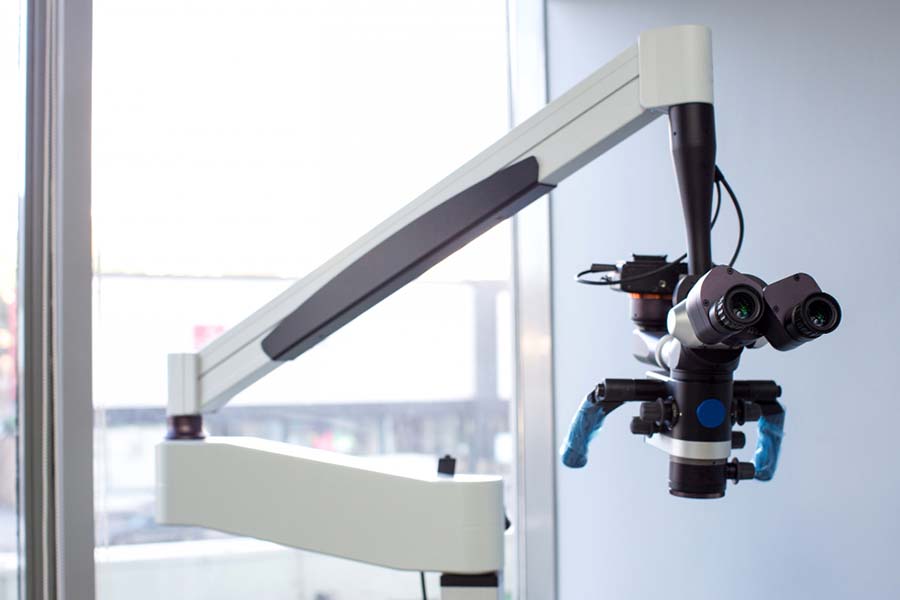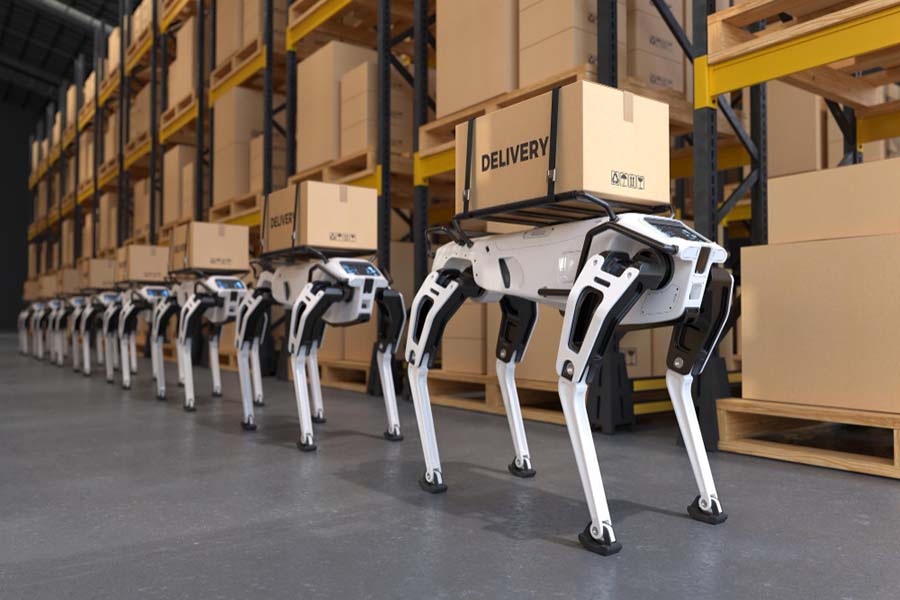The Rise of Collaborative Robots: Transforming Industries

Robots have traditionally been associated with heavy machinery, assembly lines, and manufacturing processes. However, the advancement of technology has given rise to a new breed of robots known as collaborative robots, or cobots. These robots are revolutionising industries by working safely and efficiently alongside humans.
What are Collaborative Robots?
Unlike traditional ones confined to cages or safety barriers, collaborative robots are designed to work near humans. Equipped with sensors and advanced programming, they can sense the presence of humans and react accordingly. This ensures a high level of safety and enables effective collaboration between humans and robots.
Collaborative robots come with various benefits that drive their adoption in various industries. Let’s explore some of these advantages in detail:
Increased Efficiency: Collaborative robots are specifically designed to work alongside humans, assisting them in tasks that require precision, speed, or heavy lifting. By automating specific processes, these robots significantly enhance productivity and reduce errors. They can easily handle repetitive tasks, allowing human workers to focus on more complex and cognitive tasks.
Enhanced Safety: One of the significant advantages of collaborative robots is their advanced safety features, making them suitable for working close to humans. Equipped with sensors, they can detect the presence of humans and immediately stop or slow down their movements to prevent accidents. This prevents injuries and gives workers peace of mind, knowing that they can work alongside robots without compromising their safety.
Flexibility: Collaborative robots are highly adaptable and can be programmed to perform various tasks. Unlike traditional industrial robots that require significant reprogramming for each new task, cobots can be easily reprogrammed or taught new skills by simply guiding them through the process. This flexibility allows for more efficient and agile production processes, as the robots can quickly adapt to changing requirements.
Cost-Effectiveness: Collaborative robots are often more affordable than traditional industrial robots. They require less infrastructure, such as safety cages, and can be integrated into existing workflows without significant modifications. This makes them accessible to various industries, including small and medium-sized enterprises. The cost-effectiveness of cobots opens up opportunities for businesses to automate previously economically unfeasible tasks.
Improved Ergonomics: Cobots are designed to handle repetitive or physically demanding tasks, reducing the risk of musculoskeletal disorders for human workers. By automating these tasks, collaborative robots allow humans to focus on more complex and cognitive tasks, improving overall job satisfaction and reducing the likelihood of injuries. This not only benefits the health and well-being of workers but also contributes to higher productivity levels.
Applications of Collaborative Robots
Collaborative robots have found applications across various industries, transforming work. Let’s explore some notable examples:
Manufacturing
In the manufacturing industry, collaborative robots streamline assembly processes and improve production efficiency. They can assist in picking and placing components, welding, packaging, and quality control. By working alongside human workers, cobots optimise the workflow and increase output while maintaining high levels of quality. The seamless collaboration between humans and robots in manufacturing processes improves productivity and reduces lead times.
Healthcare
Collaborative robots are making a significant impact in the healthcare industry. They can be used in hospitals and clinics to assist medical professionals in tasks such as patient lifting and transferring, dispensing, and sterilisation. These robots alleviate the physical strain on healthcare workers, minimise the risk of infections, and improve patient care. Collaborative robots enhance operational efficiency in healthcare, allowing medical professionals to dedicate more time to patient interaction and care.
Logistics and Warehousing
Collaborative robots are revolutionising order fulfilment processes in the logistics and warehousing sector. They can navigate the warehouse autonomously, picking items from shelves and preparing them for shipping. By working alongside human workers, cobots reduce the time required for order processing and improve accuracy. They can also handle repetitive tasks like sorting and packaging, allowing human workers to focus on more complex logistics operations. Collaborative robots in logistics and warehousing increase efficiency and reduce costs associated with order fulfilment.
Agriculture
Collaborative robots are finding applications in agriculture, assisting in planting, harvesting, and sorting crops. These robots can operate autonomously in fields, increasing efficiency and reducing the reliance on manual labour. They can also monitor crop health and optimise irrigation, improving productivity and reducing environmental impact. Using collaborative robots in agriculture helps address labour shortages and improves the sustainability of farming practices.
Education and Research
Collaborative robots are used in educational institutions and research facilities to enhance learning and innovation. They allow students and researchers to experiment, program, and interact with robots, fostering a deeper understanding of robotics and automation. These robots serve as valuable tools for exploring new applications and pushing the boundaries of technological advancements. Collaborative robots in education and research contribute to the development of future engineers and innovators.
The Future of Collaborative Robots
As technology evolves, collaborative robots are expected to play an even more significant role in various industries. Let’s explore some future developments and trends:
Advanced AI Integration: Collaborative robots will become more intelligent with the integration of advanced artificial intelligence. This will enable them to adapt to changing environments, learn from their interactions with humans, and make autonomous decisions to improve efficiency and productivity. AI-powered cobots can analyse data, recognise patterns, and optimise their actions in real-time.
Increased Human-Robot Collaboration: The collaboration between humans and robots will become more seamless and intuitive. Robots can understand human gestures, speech, and intentions, allowing for more natural interactions and teamwork. This enhanced collaboration will result in improved productivity and innovation.
Expansion into New Industries: Collaborative robots will venture into industries that have traditionally been difficult to automate, such as hospitality, retail, and construction. They will bring automation to tasks that require human-like agility and adaptability, opening up new possibilities for increased efficiency and productivity. Robots can handle customer service, restocking shelves, and construction site tasks.
Improved Mobility and Navigation: Future collaborative robots will have enhanced mobility and navigation capabilities. They will be able to navigate complex environments, including stairs and uneven terrains, enabling them to perform tasks in diverse settings. This increased mobility will allow cobots to assist in various industries and environments.
Interconnectivity and Data Analytics: Collaborative robots will connect networks and cloud platforms, allowing for real-time data analysis and optimisation. This will enable predictive maintenance, remote monitoring, and continuous improvement of robot performance. Interconnectivity and data analytics will unlock new possibilities for efficiency and optimisation in collaborative robotics.
In Summary
The rise of collaborative robots is transforming industries across the globe. These robots enhance productivity and efficiency and improve human workers’ safety, ergonomics, and job satisfaction. With ongoing technological advancements, we can expect even more remarkable developments in collaborative robotics, ushering in a new era of automation and collaboration.
Check out our other related posts if you enjoyed this one.
- Unmasking Cyber Secrets: The Art of Deception Revealed!
- Decoding Cyber Threats: The Social Engineering Menace
- Unlock the Ultimate Quest: Ready Player One’s Audio Adventure!
- Revolutionising Wellness: Metaverse Therapy Unleashes Mental Liberation!
- Code Mastery Unleashed: Transform Your Skills with Clean Code by Robert C. Martin! 🚀
- Top Must-Have Tech Gadgets for Kids – Unbelievable Fun!
- Mastering Crypto Trading: Proven Strategies
- Unveiling Ethereum 2.0: Advancements & Impact
- AI Transforms E-Commerce: A Digital Revolution
- AI’s Robotic Revolution: Trends & Tomorrow
If you enjoyed this blog post, subscribe for updates and stay tuned for our latest insights.
Help your friends and colleagues stay informed about the newest insights on business, marketing, finance, lifestyle, and society by sharing our blog content through Facebook, Twitter, Pinterest, LinkedIn, email, or WhatsApp links below. We can create a knowledge-sharing community and empower one another to accomplish and experience our objectives.
FAQ
What are collaborative robots?
Collaborative robots, or cobots, are designed to work close to humans. Unlike traditional robots, they do not require safety barriers or cages. Equipped with sensors and advanced programming, cobots can detect the presence of humans and react accordingly, ensuring a high level of safety and enabling effective collaboration between humans and robots.
What are the benefits of using collaborative robots?
Increased Efficiency: Collaborative robots automate tasks, enhancing productivity and reducing errors. They can handle repetitive tasks, allowing human workers to focus on more complex and cognitive tasks.
Enhanced Safety: Cobots have advanced safety features, detecting the presence of humans and stopping or slowing down their movements to prevent accidents.
Flexibility: Collaborative robots can be easily reprogrammed or taught new skills, making them adaptable to changing requirements and production processes.
Cost-Effectiveness: Cobots are often more affordable than traditional industrial robots, requiring less infrastructure and modifications to existing workflows.
In which industries are collaborative robots being used?
Collaborative robots have found applications in various industries, including:
Manufacturing: Cobots streamline assembly processes, optimise workflow, and increase output while maintaining high levels of quality.
Healthcare: Collaborative robots assist medical professionals in patient lifting, medication dispensing, and sterilisation, improving operational efficiency and patient care.
Logistics and Warehousing: Cobots revolutionise order fulfilment processes, reducing the time required for processing and improving accuracy.
Agriculture: Collaborative robots assist in planting, harvesting, and sorting crops, addressing labour shortages and improving sustainability.
Education and Research: Cobots enhance learning and innovation, allowing students and researchers to experiment, program, and interact with robots.
What can we expect in the future of collaborative robots?
In the future, we can expect the following developments and trends in collaborative robots:
Advanced AI Integration: Cobots will become more intelligent with the integration of advanced artificial intelligence, allowing them to adapt to changing environments and optimise their actions in real-time.
Increased Human-Robot Collaboration: The collaboration between humans and robots will become more seamless and intuitive, resulting in improved productivity and innovation.
Expansion into New Industries: Collaborative robots will venture into industries such as hospitality, retail, and construction, bringing automation to tasks that require human-like agility and adaptability.
Improved Mobility and Navigation: Future cobots will have enhanced mobility and navigation capabilities, allowing them to perform tasks in diverse settings.
Interconnectivity and Data Analytics: Collaborative robots will connect networks and cloud platforms, enabling real-time data analysis, predictive maintenance, and continuous performance improvement.
Credits
Featured image by Freepik.







